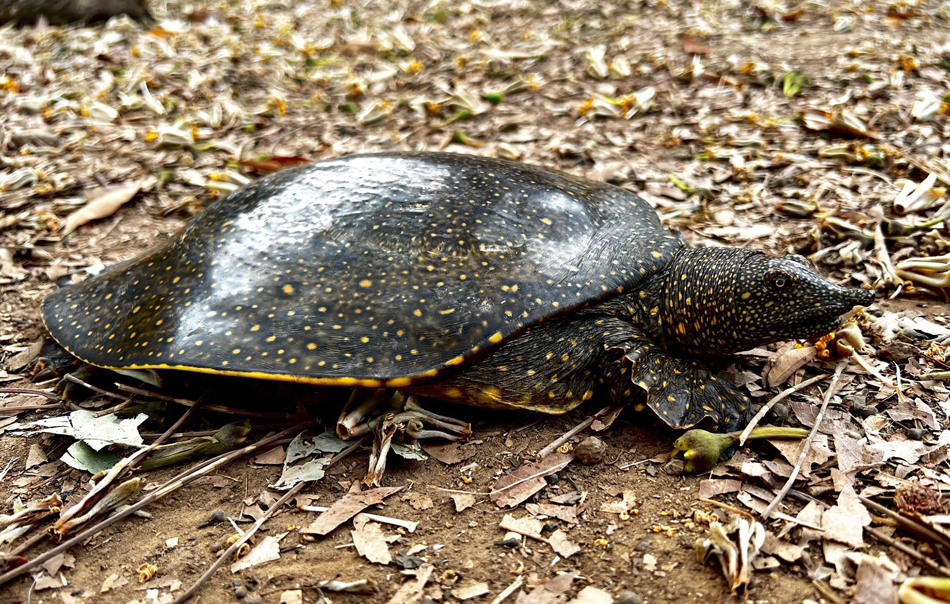The African softshell turtle Trionyx triunguis is the continent's largest freshwater turtle species. It occurs from Senegal in the west to Turkey at the easternmost extent of its range. It is categorized as Vulnerable on the IUCN Red list, although anecdotal reports suggest a 98% decline in catch per unit effort in West Africa over approximately the last 50 years, and assessors have suggested listing this regional population as Critically Endangered (van Dijk et al., 2017, dx.doi.org/10.2305/IUCN.UK.2017-3.RLTS.T62256A96894956.en). This species has been the focus of few studies, particularly in Africa.
During the course of surveys in February–March and July–August 2021, and January 2022, I spent a total of 12 weeks searching for this species along the Gambia River (c. 150 km between Gouloumbou and Tako Mayo) in south-east Senegal. My interviews with fishers, and trapping, suggest the turtle is rare, with interviewees stating they see an individual approximately every 5 years. Together with 35 fishers in nearly 30 villages, I only managed to capture one live individual (in January 2022) and I located two carapaces (in August 2021) of individuals consumed in a remote village.

African softshell turtle Trionyx triunguis, caught in the Gambia River near the village of Soucouta, Senegal. Photo: Pearson McGovern.
After measuring, marking, and conserving a tissue sample from the live individual, it was released where it was caught near the village of Soucouta. These three records were, however, sufficient to double the known records for this species in Senegal, highlighting the historical absence of surveys for this species in the country. All three individuals (two juveniles and one adult) were caught within 10 km of each other along the south-west border of Niokolo-Koba National Park, potentially the last remaining area in which this species occurs in Senegal. Although there are no previous survey data for this species in this area, fishers suggested there have been significant declines over the previous 2–3 decades, with older fishers recounting more frequent opportunistic captures of this softshell turtle on their fishing longlines in the past.
During my surveys I provided training on the measuring and marking of turtles—five species occur in this area—for fishers in the villages bordering this area of the National Park, and they were open to ensuring a future for this locally imperilled species. Continued monitoring and a long-term partnership with the fishing communities are needed if the African softshell turtle is to survive in Senegal.

